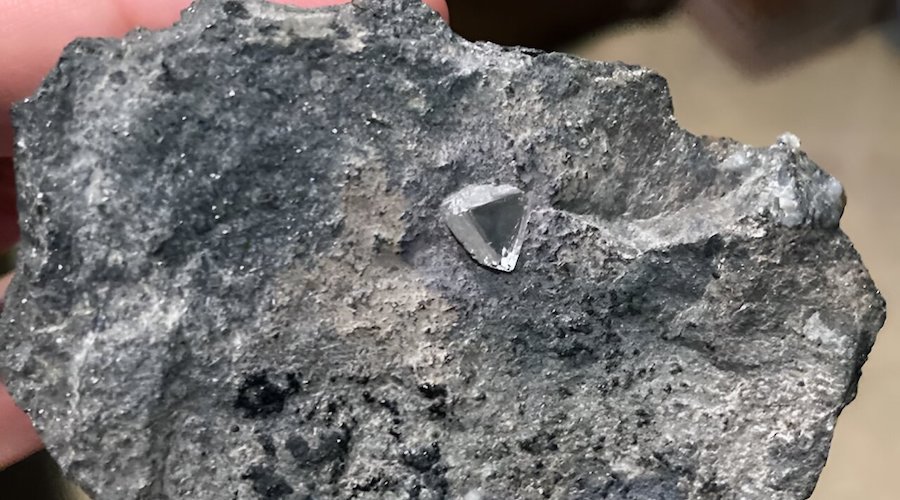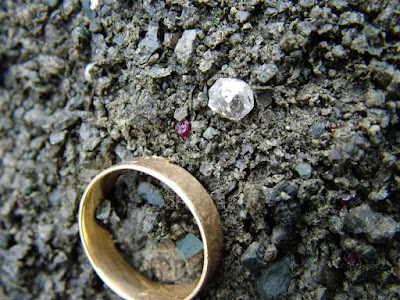
Geologists from ETH Zurich and the University of Melbourne have established a link between diamond occurrence and the mineral olivine.
In a paper published in the journal Nature Communications, the scientists explain that their method will simplify the detection of diamond deposits. The process relies on the chemical composition of kimberlites, which occur only on very old continental blocks that have remained geologically unchanged for billions of years, predominantly in Canada, South America, central and southern Africa, Australia and Siberia.
According to the study’s lead author, Andrea Giuliani, olivine is a mineral that makes up around half of kimberlite rock and consists of varying proportions of magnesium and iron. The more iron olivine contains, the less magnesium it has and vice versa.
“In rock samples where the olivine was very rich in iron, there were no diamonds or only very few,” Giuliani, who has been studying the formation and occurrence of the gemstones since 2015, said in a media statement. “We started to collect more samples and data, and we always got the same result.”
His investigations ultimately confirmed that olivine’s iron-to-magnesium ratio is directly related to the diamond content of the kimberlite. Giuliani and his team took these findings back to De Beers, who had provided them with the kimberlite samples. The company was interested and provided the scientific study with financial support and asked the researchers not to publish the results for the time being.
A slow, repetitive process
In 2019, Giuliani moved from Melbourne to ETH Zurich and, supported by the Swiss National Science Foundation, began to look for explanations for the connection between olivine’s magnesium and iron content and the presence of diamonds.
With his new colleagues, he examined how the process of metasomatism, which takes place in the earth’s interior, affects diamonds. In metasomatism, hot liquids and melts attack the rock. The minerals present in the rock react with the substances dissolved in the fluids to form other minerals.
The geologists analyzed kimberlite samples that contained olivines with a high iron content—and hence no diamonds. They discovered that olivine becomes richer in iron in the places where melt penetrates the lithospheric mantle and changes the composition of mantle rocks significantly. And it is precisely in this layer, at a depth of around 150 kilometres, that diamonds are present.
The infiltration of the melt that makes olivine richer in iron destroys diamonds. If, on the other hand, no or only a small amount of melt from underlying layers penetrates the lithospheric mantle and thus no metasomatism takes place, the olivine contains more magnesium—and the diamonds are preserved.
“Our study shows that diamonds remain intact only when kimberlites entrain mantle fragments on their way up that haven’t extensively interacted with previous melt,” Giuliani said.
A key point is that kimberlites don’t normally reach the earth’s surface in one go. Rather, they begin to rise as a liquid mass, pick up fragments of the mantle on the way, cool down and then get stuck. In the next wave, more melt swells up from the depths, entrains components of the cooled mantle, rises higher, cools, and gets stuck. This process can happen multiple times.
“It’s a real stop-and-go process of melting, ascent and solidification. And that has a destructive effect on diamonds,” Giuliani noted. If, on the other hand, conditions prevail that allow kimberlites to rise directly to the surface, then this is ideal for the preservation of the gemstones.
De Beers is already using olivine analysis
Olivine analysis is as reliable as previous prospecting methods, which are mainly based on the minerals clinopyroxene and garnet. However, the new method is easier and faster: it takes only a few analyses to get an idea of whether a given kimberlite field has diamonds or not.
“The great thing about this new method is not only that it’s simpler, but also that it finally allows us to understand why the previous methods worked,” Giuliani said. “De Beers is already using this new method.”
Source: DCLA


